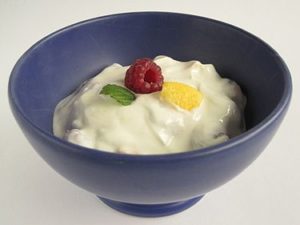Please note that the study was of people living in the Baltimore, Maryland area - so it is unknown if this would hold true for people living elsewhere. From Medical Xpress;
Virus may affect mental abilities, study reports
People with an algae virus in their throats had more difficulty completing a mental exercise than healthy people, and more research is needed to understand why, US scientists say. A study in the Proceedings of the National Academy of Sciences showed that the virus was present in about half of 92 human subjects studied, and those who had it performed worse on certain basic tasks.
The virus, known as Acanthocystis turfacea Chlorella virus 1, or ATCV-1, also appeared to limit the cognitive abilities of mice.The mice had a harder time navigating a maze and noticing new objects in their surroundings after they were infected.
It remains unclear if the virus was truly driving the drop in mental functioning. Researchers have not yet shown the cause and effect between the virus and the intelligence results."At this point we do not think that this virus should be considered as a threat to individual or public health," said lead researcher Robert Yolken, a virologist at Johns Hopkins University in Baltimore, Maryland. The virus was found by accident while scientists were analyzing microbes in the throats of healthy humans for a different study.
Experts have been studying viruses similar to ATCV-1 for 35 years, said senior author James Van Etten of the University of Nebraska, an expert on algal viruses. Van Etten joined the research four years ago when Johns Hopkins scientists found ATCV-1's DNA sequences in the brain tissue of people who had died with mental disorders such as schizophrenia.
"These viruses are ubiquitous in fresh water ponds and streams throughout the world," Van Etten said. He noted that the virus—previously thought to only infect algae—could make its way into the human body when people swallow water while swimming.There might also be another host in nature, such as mosquito larvae, he said. But the nature of the disease is still in the early stages of analysis.
It is also unknown if the virus's effects on the brain are lasting or temporary. Scientists have long understood that viruses interact with DNA, and further studies could shed more light on the role of the virus on cognition.
"As more studies like this are conducted, I believe we'll find out there's even more interaction between viruses, bacteria and fungi that are either ingested or breathed into our noses and mouths and the overall human condition," said Jordan Josephson, ear nose and throat specialist at Lenox Hill Hospital in New York, who was not involved in the study.
Further information on this study and the virus. From Medical Xpress:
Researchers identify algae-virus DNA in humans
From Newsweek:

 Bottom line: Try to avoid artificial sweeteners!
Bottom line: Try to avoid artificial sweeteners! Are probiotic bacteria the reason?
Are probiotic bacteria the reason? Jogging? Now retirees planning to relax and putter around instead have to jog for health? From Science Daily:
Jogging? Now retirees planning to relax and putter around instead have to jog for health? From Science Daily: